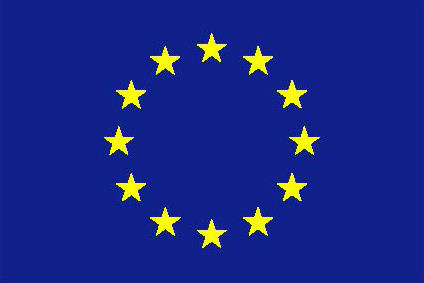HELCATS - Who's Involved?
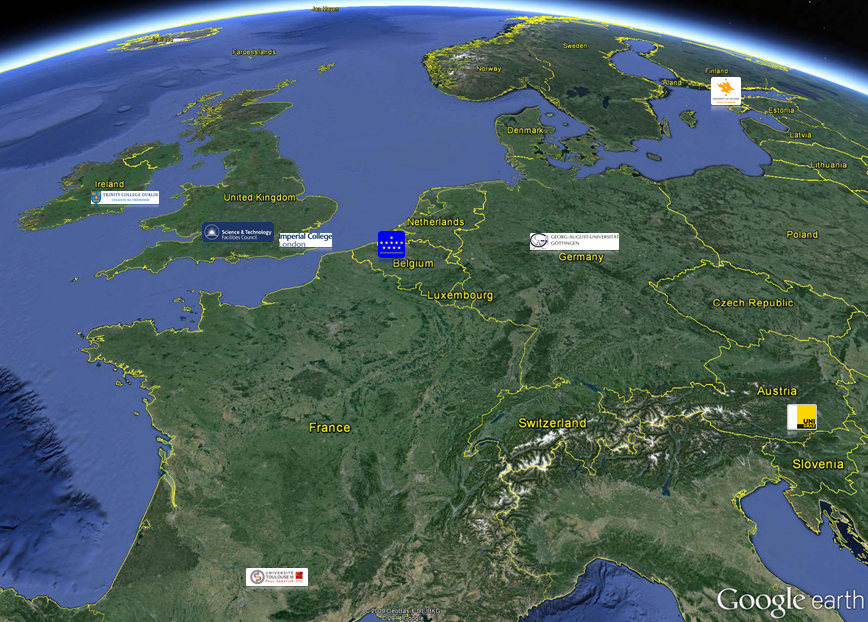
The HELCATS consortium draws upon the experience and
expertise of universities and research institutes across
Europe. Direct participation is either as an EU
funded consortium institute or as
a third party institute. Involvement of the
research community and other stakeholders is actively encouraged
to help provide feedback to consortium and ensure that the outputs
from the project are of long term benefit.
To find out more about the HELCATS partners click on the institute name in the map above or see the table below. Details on the contribution of each of the partners can be found in the work description or by following the links to the individual work pacakages.
| Beneficiary no. | Beneficiary organisation name | Country | Work packages |
|---|---|---|---|
| 1 (Coordinator) |
Science and Technology Facilities Council (STFC) | UK | WP1, WP2, WP3,WP7, WP8 |
| 2 | Universitaet Graz (UNIGRAZ) | Austria | WP3, WP4 |
| 3 | Universite Paul Sabatier Toulouse III (UPS) | France | WP4, WP5, WP6, WP8 |
| 4 | Georg-August-Universitaet Goettingen Stiftung Oeffentlichen Rechts (UGOE) | Germany | WP2, WP3, WP4 |
| 5 | Koninklijke Sterrenwacht van Belgie (ROB) | Belgium | WP2, WP4, WP7 |
| 6 | Imperial College of Science, Technology & Medicine (IMPERIAL) | UK | WP4, WP7 |
| 7 | Helsingin Yliopisto (UH) | Finland | WP4, WP5 |
| 8 | Trinity College Dublin (TCD) | Ireland | WP3 |
| Beneficiary no. | Beneficiary organisation name | Country | Work packages |
|---|---|---|---|
| (Third party) | Centre National de la Recherche Scientifique (CNRS) | France | WP4, WP5, WP6 |
| (Third party) | George Mason University (GMU) | USA | WP6 |
HELCATS Consortium Institutes
 Science & Technology Facilities Council
Science & Technology Facilities Council
Formed by Royal Charter in 2007 (as a merger of CCLRC and
PPARC), STFC is one of Europe's largest multidisciplinary
research organisations supporting scientists and engineers
world-wide. STFC operates world-class, large-scale research
facilities and provides strategic advice to the UK government
on their development. It also manages international research
projects in support of a broad cross-section of the UK
research community. STFC also directs coordinates and funds
research, education and training. STFC has a budget of around
£530M per annum and employs more than 2200 staff.
STFC’s
space
department, RAL
Space, located at the Rutherford Appleton Laboratory, has
been at the forefront of UK space research for over 50 years,
with a heritage illustrated by involvement in the development
of over 200 instruments launched into space. RAL Space has
expertise in astrophysics, space environment physics and space
weather, solar physics, Earth observation and atmospheric
physics, with parallel associated activities in space
instrument engineering and technology ranging from optics and
detector technology to thermal engineering and assembly,
integration and verification testing of space
hardware. Activities include instrument operations (currently
including instruments aboard the SOHO, Cluster, Herschel,
Hinode and STEREO spacecraft) and leading roles in
ground-based facilities (such as EISCAT and LOFAR UK) and
archives (UK Solar System
Data Centre; UKSSDC). HELCATS is focused on the RAL Space
Solar Physics and Space Environment Groups whose leadership
and expertise in the conception, development and operation of
key instruments (e.g. aboard missions such as SOHO, STEREO and
Cluster) and whose established scientific expertise in solar
mass ejection and heliospheric physics, are central to the
work described in this project. RAL Space has experience in
FP7-funded activities, for example, ESPAS and HELIO.
- STFC Team
- Richard Harrison richard.harrison@STFC.AC.UK
- Jackie Davies jackie.davies@STFC.AC.UK
- Chris Perry chris.perry@STFC.AC.UK
- Mario Bisi mario.bisi@STFC.AC.UK
- Jason Byrne jason.byrne@STFC.AC.UK
- David Barnes david.barnes@STFC.AC.UK
- Mike Hapgood mike.hapgood@STFC.AC.UK
- Matthew Wild matthew.wild@STFC.AC.UK
- Jane Porter jane.porter@STFC.AC.UK
 University of Graz
University of Graz
In Austria, research in the field of solar flares and CMEs, and their interplanetary consequences and space weather impact is mainly performed at the Institute of Physics of the Universitaet Graz (UNIGRAZ). UNIGRAZ is the second largest university in Austria, and its community is comprised of about 3,500 staff and 25,000 students.
The Institute of Physics has a solar and astrophysics research group that runs its own observatory, the Kanzelhöhe Observatory for Solar and Environmental Research, located 200 km from Graz. Kanzelhöhe Observatory is one of the main stations world-wide providing regular, high-cadence, full-disc observations of solar phenomena such as sunspots, flares and prominence eruptions. The Observatory provides ground-based support for space missions (e.g. SOHO, TRACE, RHESSI) and sends regular sunspot and solar flare reports to SIDC (ROB) and NGDC (US).
The solar and astrophysics research group at UNIGRAZ, including its Kanzelhöhe Observatory, currently consists of five scientific staff members: Manuela Temmer, Astrid Veronig, Arnold Hanslmeier, Ute Möstl and Werner Pötzi, who are engaged in many national and international collaborations. In addition, there are currently about ten PhD students involved in solar physics research, all third-party funded through national and international research projects. The research group has a strong focus on the physics of space-weather related events on the Sun, i.e. solar flares and CMEs, as well as their interplanetary propagation and Earth impact. The group has extensive experience in data analysis and interpretation from all recent solar and solar-wind dedicated space missions (STEREO, SDO, Hinode, TRACE, SOHO, RHESSI, GOES, ACE, Wind etc) as well as ground-based solar observations. The group is in close contact with the magnetospheric research group (led by R. Nakamura) and the Venus Express magnetometer PI (T. Zhang) at the Space Research Institute of the Austrian Academy of Sciences, also in Graz.
 Universite Paul Sabatier Toulouse III
Universite Paul Sabatier Toulouse III
The Institut de Recherche en Astrophysique et Planétologie
(IRAP former CESR) is a joint research unit of the Universite
Paul Sabatier Toulouse III (UPS) and the Centre National de la
Recherche Scientifique (CNRS). IRAP is active in three main
areas: solar system sciences, high energy astrophysics, and
the cold universe, each covering theory, instrumentation, data
interpretation, teaching and dissemination of
knowledge. Research in the solar system group covers two main
fields: (1) natural plasmas; the ionised surroundings of the
Earth and planets, the Sun and the interplanetary space; (2)
planetology; the surfaces and the atmospheres of planets and
moons. The Solar System group of IRAP is renowned for its high
level of expertise in data analysis software development
(CLWeb, http://clweb.cesr.fr/). The
Centre de Données de la Physique des Plasma (CDPP, Plasma
Physics Data
Centre, http://cdpp.eu/) is a
data centre for space plasma data that is operated jointly by
CNRS and Centre National d’Etude Spatiale (CNES). CDPP
maintains a large and steadily growing database and provides
access to some external databases through interoperable
services. It has been instrumental in many European projects:
HELIO, IMPex and EUROPLANET. The CDPP created the Automated
Mutli-Dataset Analysis (AMDA) data-mining tool (reachable on
the CDPP web server
at http://amda.cdpp.eu/)
that will be exploited in HELCATS. Additionally CDPP is
currently creating a propagation tool that will facilitate
comparison of solar and in-situ data. The tool, accessible to
users in March
2013 http://propagationtool.cdpp.eu/,
offers a web-based interface for users to visualise J-maps
created from heliospheric images. The involvement of UPS/IRAP
in the HELCATS project is therefore three-fold. It will
provide (1) the science expertise necessary to
analyse/catalogue CMEs, CIRs and blobs in imaging and in-situ
data, (2) provide the scientific/technical expertise to
assimilate HI data into numerical simulations, and (3) provide
the technical expertise to integrate the HELCATS CME and CIR
catalogues in the propagation tool in order to facilitate
their visualisation and distribution. The in-situ CME and CIR
lists will easily integrate into AMDA, also promoting
distribution of the data.
 Georg-August-Universitaet, Goettingen
Georg-August-Universitaet, Goettingen
Space and ground-based solar physics and the origins of solar and stellar activity are key research areas of the Institute for Astrophysics at the Georg-August-Universitaet Goettingen Stiftung Oeffentlichen Rechts (UGOE), Germany. The institute’s long tradition in ground-based observations, based on leading involvement in the Gregory, THEMIS and VTT telescope projects on Tenerife, has now been extended to space activities through Co-I and G-I involvement in the SOHO and STEREO missions, and the forthcoming Solar Orbiter and Solar Probe Plus missions. The institute’s participation will be led by Dr. Volker Bothmer as head of the institute’s research group on “Physics of the Sun and Heliosphere, solar activity and space weather, and space mission and instrument development” based on his leading role in international projects and his dedicated space physics expertise. The Institute offers a unique research environment, through state-of-the-art software and hardware and an excellent administrative infrastructure.
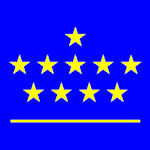 Royal Observatory Belgium
Royal Observatory Belgium
ROB is a Belgian government research institute organised into four operational directorates: Reference Systems and Planetology, Seismology and Gravimetry, Astronomy and Astrophysics, and finally Solar Physics and Space Weather. In total, ROB employs about 180 people. The operational directorate dedicated to solar physics (SIDC) has 42 members, including scientists, engineers and support staff. The research includes the study of magnetic reconnection, CMEs, solar wind, plasma flows in solar features, line-profile analysis, studies of the corona based on disc image or time series, and coronographic investigations in the heliosphere. The SIDC infrastructure includes a dedicated building for ground-based solar observing in which the Uccle Solar Equatorial Table (USET) is mounted with 4 operational telescopes. These telescopes (white light and H-alpha) operate on a daily basis and support the World Data Centre activities. In space, SIDC is PI of two instruments on board the PROBA2 mission: SWAP, a full-Sun EUV imager, and LYRA, a high-cadence radiometer. It is also co-PI institute of EUI, the EUV imager aboard Solar Orbiter. SIDC is also co-I on SOHO/EIT. SIDC scientists are also co-Is on STEREO, SDO and PICARD. ROB hosts a SDO data centre, the European root for distribution of SDO/AIA data, and whenever necessary, SDO/HMI data. Recently it became a Virtual Solar Observatory server in order to alleviate the load on the US server. ROB is also in charge of the Humain Radioastronomy Station.
 Imperial College
Imperial College
Consistently rated amongst the world's best universities, Imperial College of Science, Technology & Medicine, London (IMPERIAL) is a science-based institution with a reputation for excellence in teaching and research. In The Times Higher Education World University Rankings 2011-12, it was rated the 3rd best in Europe and 8th in the World. Founded in 1907, it hosts nearly 14,000 full-time students from 126 countries and conducts 242 taught courses. Space physics research at IMPERIAL is of the highest international standing as evidenced from leadership roles in international space projects, high-profile publications, invited talks, awards and prizes. Over the past 5 years the research group has collectively published over 100 first author publications including several in high-profile publications such as Nature and Science. Recent awards and prizes to the applicants have included the 2007 Institute of Physics Chree medal and 2008 Royal Society Hughes medal to Prof. Michele Dougherty, the 2008 Royal Astronomical Society Chapman medal to Prof. André Balogh, the 2006 Chapman medal to Prof. Steve Schwartz, the 2004 Fowler award to Prof. Tim Horbury and the 2006 and 2012 COSPAR Zeldovich medals to Dr. Marina Galand and Dr. Jonathan Eastwood.
IMPERIAL’s current research programme is built on the success of the Cluster and Cassini missions, for which the Group is PI on the magnetometer instruments, and Rosetta (PI institute for the Rosetta Plasma Consortium). It leads the Cluster Science Centre activities. Members of the group are Co-Investigators on STEREO, Hinode, Themis, and Venus Express. IMPERIAL is playing a leading role in the development of new missions, including Solar Orbiter (PI institute), CINEMA (PI institute), Sunjammer (PI institute), Magnetospheric Multi-Scale (Co-I institute), and Venus Climate Orbiter (Co-I institute). IMPERIAL is world leading in the advanced analysis of space mission plasma data. IMPERIAL has previously participated in Marie Curie research networks, and currently participates in a Marie-Curie IRSES programme.
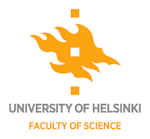 University of Helsinki
University of Helsinki
The Finnish component of this project will be conducted at the Division of Geophysics and Astronomy (established on 1st January 2010) of the Department of Physics at the University of Helsinki (UH-Phys). UH-Phys is a large physics department with 30 professors and a total annual staff effort of about 330 person-years (http://www.physics.helsinki.fi/), of which about 50 person-years are within space research and astronomy.
The space scientists at UH-Phys are part of the Kumpula Space Centre (KSC), which also includes space researchers at the Aalto University, and the Finnish Meteorological Institute. KSC is the largest space research environment in Finland (taken together, the three research groups have 2 professors, over 20 PhD scientists, and several graduate students) and conducts basic space research in a variety of fields, including solar-terrestrial and solar-planetary physics, cosmology related to the Planck satellite project, studies of the Martian meteorology and studies of meteorite impacts. KSC has a world leading role in developing global magnetospheric computer simulations and is well-known for solar energetic particle modelling and analysing solar eruptions in the interplanetary medium and their consequences in the near-Earth space. Researchers at KSC have active roles in ESA space weather activities and lead several FP7 projects both in the areas of space science and space weather.
The studies of solar eruptions and solar wind within KCS are primarily conducted at UH-Phys. The UH-Phys team consist of six scientific researchers: Hannu Koskinen, Rami Vainio, Emilia Kilpua, Kateriina Andreeova, Kristian Snekvik and Jens Pomodell as well as several PhD and graduate students that are trained together with the other KSC institutes. The team focuses on analysing and modelling coronal mass ejections (CMEs) and their shocks close to the Sun and in the interplanetary medium, as well as particles accelerated at the CME shocks and their geomagnetic consequences. Through these studies the team has gained extensive experience in using a large variety of spacecraft measurements, including data from STEREO, SOHO, Wind and ACE.
 Trinity College Dublin
Trinity College Dublin
Trinity College Dublin is a university in the liberal arts tradition, established in 1592 by Queen Elizabeth I, and is the leading university on the island of Ireland. It is highly successful in securing research funding, and has been an active beneficiary in the Framework Programmes dating back to the very first.
The School of Physics is in the top 5 schools at TCD in terms of research income and has a well-established international stature in innovative research in materials, photonics, nanoscience, computational physics and astrophysics. Indeed, members of the school have included five Fellows of the Royal Society and a Nobel Prize winner in physics. Members of the School publish 100 to 150 peer-reviewed articles in international journals annually. The School of Physics has an annual research budget of close to €10M – by far the largest and most internationally reputable physics department in Ireland.
The Astrophysics Research Group (ARG) carries out world-leading research in solar physics, stellar astronomy, active galactic nuclei and emission line diagnostics. It enjoys close research links with researchers at the European Space Agency, NASA, University of Cambridge, Queen’s University Belfast, University of St. Andrews, ROB, University College London and STFC. ARG has published extensively in highly ranked international journals.
- TCD Team
- Peter Gallagher peter.gallagher@tcd.ie
- Eoin Carley carleyo@tcd.ie
- Pietro Zucca zuccap@tcd.ie
HELCATS Third Party Institutes
In addition to the main consortium members the HELCATS project also has several third party institutes that will be constributing directly to the project but are funded through other sources.
The Centre National de la Recherche Scientifique (CNRS) is a third party, via UPS. CNRS is the largest governmental research organisation in France and the largest fundamental science agency in Europe. It employs 26,000 permanent employees (researchers, engineers, and administrative staff) and is included here because it is the employer of the UPS staff working on HELCATS.
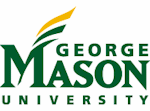 George Mason University
George Mason University
George Mason University (GMU) is a public university based in Fairfax County (Virginia) in the United States of America. The university has strength in the basic sciences with critical mass in computational sciences. Within HELCATS GMU will run 3-D MHD simulations of the solar wind and transients for UPS as part of the deliverables of WP6


